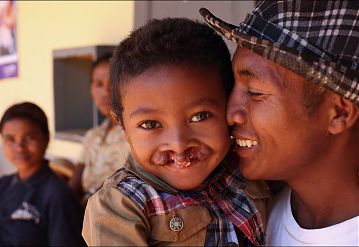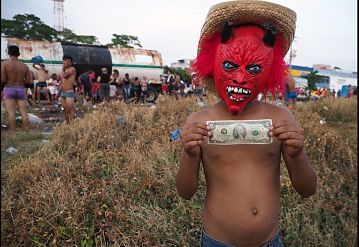I’d been toying with the idea of a book on protest ever since chemo stopped me shooting actively. I knew from the start what I didn’t want: a beautifully printed photo per page coffee-table book. I wanted the photographs to say something, to communicate, not decorate. Not showcasing art or craft, but documents with purpose. My pictures are active, not passive.
The problem was, I had no idea how to do it. I made a few dummies, but none worked, and I didn’t know why. Then I mentioned my stalled book idea in a pro photographers’ Facebook group. Stroke of luck #1: Colin Jacobson, one of the best picture editors I’d ever worked with, offered to help me throw out 9,800 or so of the 10,000 images that I was drowning in. I snatched his arm off.
We met, and stroke of luck #2 - he brought along designer Ian Denning, (ex-Sunday Times magazine and much else). Colin’s edit was ruthless (I wept frequently). Ian brought a mag-style layout and lively, engaging sequencing. He was also the most critical, difficult and demanding designer I’ve ever worked with and I thank him from the bottom of my heart for it.
Stroke of luck #3, Colin Wilkinson, who’d sold his Bluecoat Press, got bored and launched new imprint Image And Reality. He’d long been interested in a protest book from me, took the book on and ran a brilliant Kickstarter campaign that raised 10% over target.
But we didn’t yet have a book. Just draft layouts, dummy pages, a rough edit of scratchy low-res scans, dull prosaic captions scraped from metadata, and lorem ipsum filler text everywhere. The captions weren’t enough — but I was clear I couldn't channel an academic writing about the sociology of protest. What could I write that wasn’t an unnecessary description of the photo or opinionated commentary? Stroke of luck #4: a flicker of Zen illumination. The photos could tell their own stories perfectly well without my help. I only needed to write about what I saw, what happened to me. The words began to flow.
Stroke of luck #5: Walter Donohue — a razor-sharp text editor and script writer (look him up) stepped in. Many virtual blue-pencil edits later, and suddenly it’s beginning to feel like readable text.
There were still plenty of glitches, horribly scratched, filthy, badly exposed originals. A last-minute discovery that 80 or so scans were made 20 years ago and turned out to be just jokes with added pixels. Much hair tearing with the printers (natch) with repeated proofs and delays till we got it right.
And then boxes of books arrived. It’s been an at times gruelling process, but satisfying to see issues that never got mainstream coverage take their place alongside more familiar landmark moments. It is, I hope, purposeful.
See more work by David Hoffman





